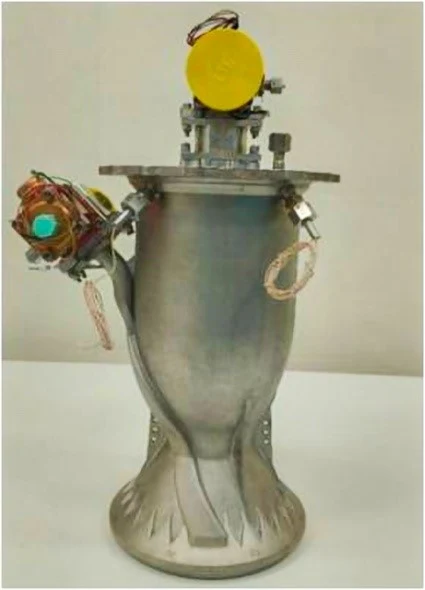
The Indian Space Research Organisation (ISRO) has achieved a significant milestone with the successful hot testing of a liquid rocket engine manufactured using 3D printing technology. This test represents a major breakthrough in rocket manufacturing.
The test was successfully conducted for a duration of 665 seconds on May 9, 2024, at the ISRO Propulsion Complex in Mahendragiri, Tamil Nadu. The engine tested is the PS4 engine, which is used in the upper stage of ISRO's Polar Satellite Launch Vehicle (PSLV).
The engine is a Made-in-India product, developed by ISRO's Liquid Propulsion Systems Centre (LPSC) and manufactured by WIPRO 3D, a 3D printing and additive manufacturing business of Wipro Limited. Started in 2012, Wipro 3D is a part of Wipro's strategic initiative for the future of manufacturing. Since its inception, Wipro 3D has quickly grown into a leading provider of metal Additive Manufacturing Solutions and Services to the Aerospace, Space, Defense, Industrial & Tooling, Heavy Engineering, Healthcare, Automotive, and Nuclear sectors.
The engine was manufactured using a technique called Laser Powder Bed Fusion, which reduced the number of parts from 14 to a single piece and eliminated 19 weld joints. This new manufacturing process saves 97% of raw materials and reduces production time by 60%.
 |
| 3d printed PS4 engine |
The engine uses a bipropellant combination of Nitrogen Tetroxide as the oxidizer and Mono Methyl Hydrazine as fuel. This advancement not only enhances the efficiency of rocket production but also demonstrates ISRO's commitment to innovation and self-reliance in space technology.
The same engine is also used in the Reaction Control System (RCS) of the first stage (PS1) of PSLV. The engine was developed by the Liquid Propulsion Systems Centre (LPSC), ISRO.
LPSC redesigned the engine making it amenable to the Design for Additive Manufacturing (DfAM) concept thereby gaining considerable advantages. The Laser Powder Bed Fusion technique employed has brought down the number of parts from 14 to a single-piece, and eliminated 19 weld joints, saving significantly on the raw material usage per engine (13.7 kg of metal powder compared to the 565 kg of forgings and sheets for conventional manufacturing process) and reduced 60% in the overall production time.
It is planned to induct this AM PS4 engine into the regular PSLV program of ISRO.
















 IndianWeb2.com is an independent digital media platform for business, entrepreneurship, science, technology, startups, gadgets and climate change news & reviews.
IndianWeb2.com is an independent digital media platform for business, entrepreneurship, science, technology, startups, gadgets and climate change news & reviews.



